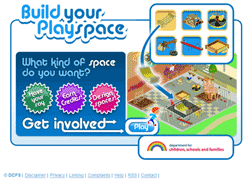Back from the Christmas break, and thoughts are turning to the second annual UK Government Barcamp at the end of the month. I’m told the venue is about to be confirmed; and already we’re seeing people concerned at not being able to get a ticket, despite the fact ‘tickets’ haven’t yet been released. Regardless, it’s probably a good time to start thinking about what I’m going to talk about.
I guess people are expecting a session from me on WordPress, and what I’ve been doing with it lately. But I did a fairly generic session on the same subject last year, so I’m trying to think of a new angle on it. And anyway, the amount of times WordPress comes up in conversation these days, with government colleagues and others, maybe people know enough about it now. Or maybe that’s just the conversations I tend to have.
So, dear readers, over to you. Is there anything you’d like me to talk about? I can demo the new v2.7 interface, which many people won’t yet have seen. I can do a walkthrough of any (or all) my recent work, if that’s helpful – be it technically or editorially focussed. Maybe something about use of WordPress in the longer term: upgrading, hosting, extending. Or if people would value a ‘from the very basics’ session, I’m happy to oblige. Let me know in the comments, or contact me directly.
And if I may, I’d like to throw out a few ideas for sessions I’d like to attend myself.
- I want someone to lead a discussion about consultations, on a really fundamental level. Off the top of my head: we’ve had Harry M’s efforts to make consultations more visible; and Steph‘s experimental work at DIUS – has either initiative had a demonstrably positive effect, either qualitatively or quantitatively?
- What about the explosion of government content on YouTube? Does anyone have any tips, tricks or even metrics to share? What tools are people using to shoot and edit the footage, and what are they doing to ensure it gets seen?
- And I want to know about the various attempts to ‘engage the unengaged’ internally… specifically press offices. I know of at least two explicit initiatives to get press officers onboard; what’s happened with them? Are the dashboards and/or ‘saved searches’ helping?
I’m also planning to use the Barcamp as an excuse to redesign puffbox.com, subject to other commitments in the next few weeks. The work-in-progress design is, let’s say, quite dramatic; everything more or less in the same place, but very different ‘screen furniture’. You have been warned.


